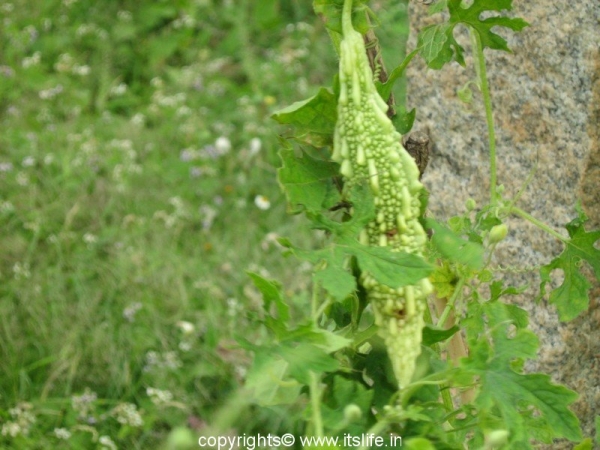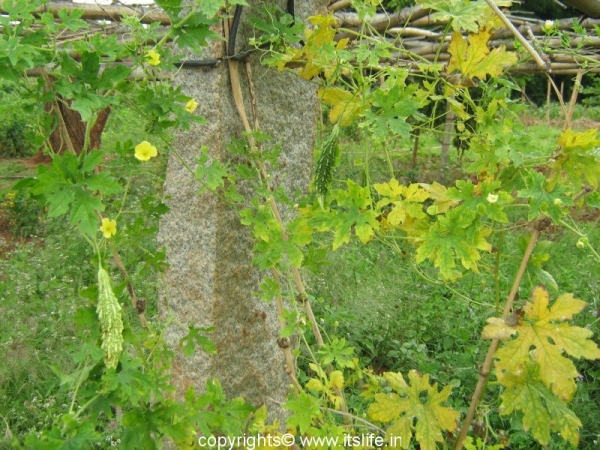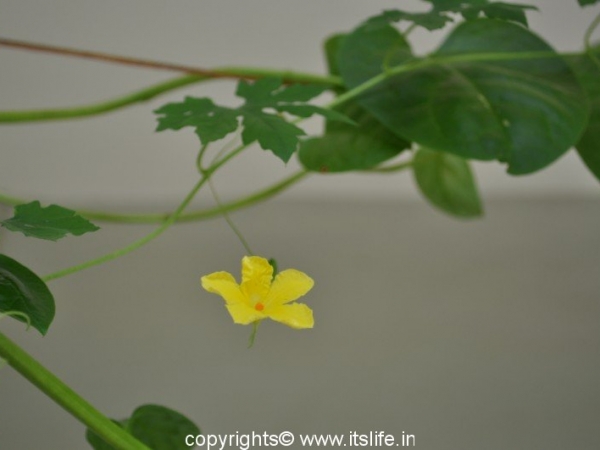Most of us at one time in our life would have hated Bitter Gourd and some of us during the lifetime would have also acquired the taste of Bitter Gourd. Common names are Bitter Melon, Bitter Squash, or Balsam-Pear and the botanical name is Momordica charantia and belongs to Cucurbitaceae family (Pumpkin). In Hindi and Urdu, it is known as Karela, in Sanskrit it is known as Kaarvellakah, and in Kannada it is known as Haagalakaayi. It is a native of India and is widely grown in Asia, Africa, and the Caribbean.
Bitter Gourd is a vine and grows up to 5 meters long. The pretty leaves are green, alternate, 4 to 12 cms across with 3 – 7 deeply separated lobes. Each leaf has a tendril which helps the plant in climbing.
Male and female flowers are separate and near each leaf a flower blooms. The male flowers have a yellow center and conical base and female flowers have a green center and a small bump at the base.
Fruit is dark green to light green with uneven surface and oblong. It is hollow with white seeds and pith. The rind is crunchy and watery. Fruit is edible but is bitter to taste.
As the fruit ripens it opens up at one end to reveal seeds covered in red pulp. The red pulp is sweet and is edible uncooked.
Uses:
The raw fruit is used to prepare many dishes. It is also used in traditional medicine to treat type II Diabetes, Chronic cough, Fever, Burns, Painful menstruation, and certain Skin conditions.
Propagation:
Propagation is by seeds. A very easy to grow plant, ensure that you provide support for it to spread.
Recipes using Bitter Gourd:
Hagalakayi (Bitter Gourd) Sutta Chutney
Hagalkayi Palya
Karela Masala Fry
Hagalkayi Khara Gojju
Hagalkayi Uppinakayi
Hagalkayi Podi
Shukto
Karela Alu Subzi
Hagalkayi Kootu
Stuffed Karela
Karela Masala Fry




